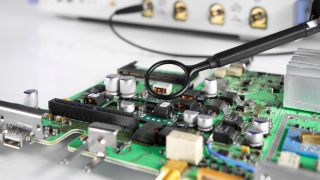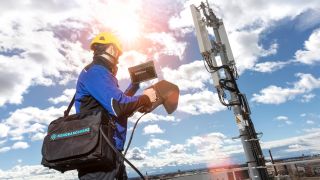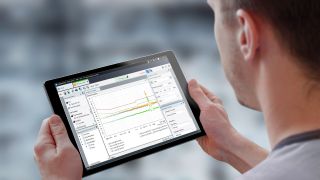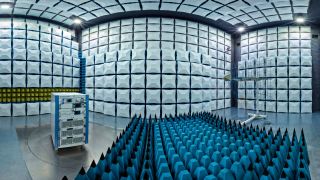As shown in the figure above, precompliance testing and debugging should be incorporated into the design process itself. This makes it easier to find interference issues.
EMF and wireless coexistence testing
The increasing use of wireless and multi-technology products within crowded RF environments creates additional challenges, beyond the conventional scope of evaluating devices for unwanted emissions and susceptibility to external emissions.
Wireless coexistence testing in line with the ANSI C63.27-2021 standard assesses the ability of the EUT to properly function in the electromagnetic environments in which it will be used. Human exposure to radio frequency electromagnetic fields (EMF) from LTE or 5G mobile networks (as well as other sources) is regulated by national and international standards. EMF testing involves measuring the field strength of these emissions and detecting the signal source.
EMC testing methods
Electromagnetic interference (EMI) or emissions testing ensures that electronic devices do not emit excessive electromagnetic radiation that could interfere with other devices or systems. Electromagnetic susceptibility (EMS) or immunity testing, on the other hand, assesses a device’s ability to operate without disruptions in the presence of electromagnetic interference from external sources.
In this guide, we’ll focus on four EMC test methods:
- Conducted emissions
- Conducted immunity
- Radiated emissions
- Radiated immunity
Additional test types like flicker, harmonics, ESD, surge, magnetic field immunity and electrical fast transient (EFT)/burst testing are not covered in the scope of this guide.
First, let’s discuss some basics. For conducted testing, the measured signals are the ones introduced by the EUT onto the AC power or “mains” network, most often through the EUT’s power cord. These signals are usually in the frequency range of 9 kHz to 30 MHz. The EUT is plugged into a line impedance stabilization network (LISN), which is then connected to the measurement instrument.
A typical setup for conducted emissions testing includes:
- EMI test receiver
- Test automation software
- Transducers, such as LISNs or artificial mains network (AMN)




















